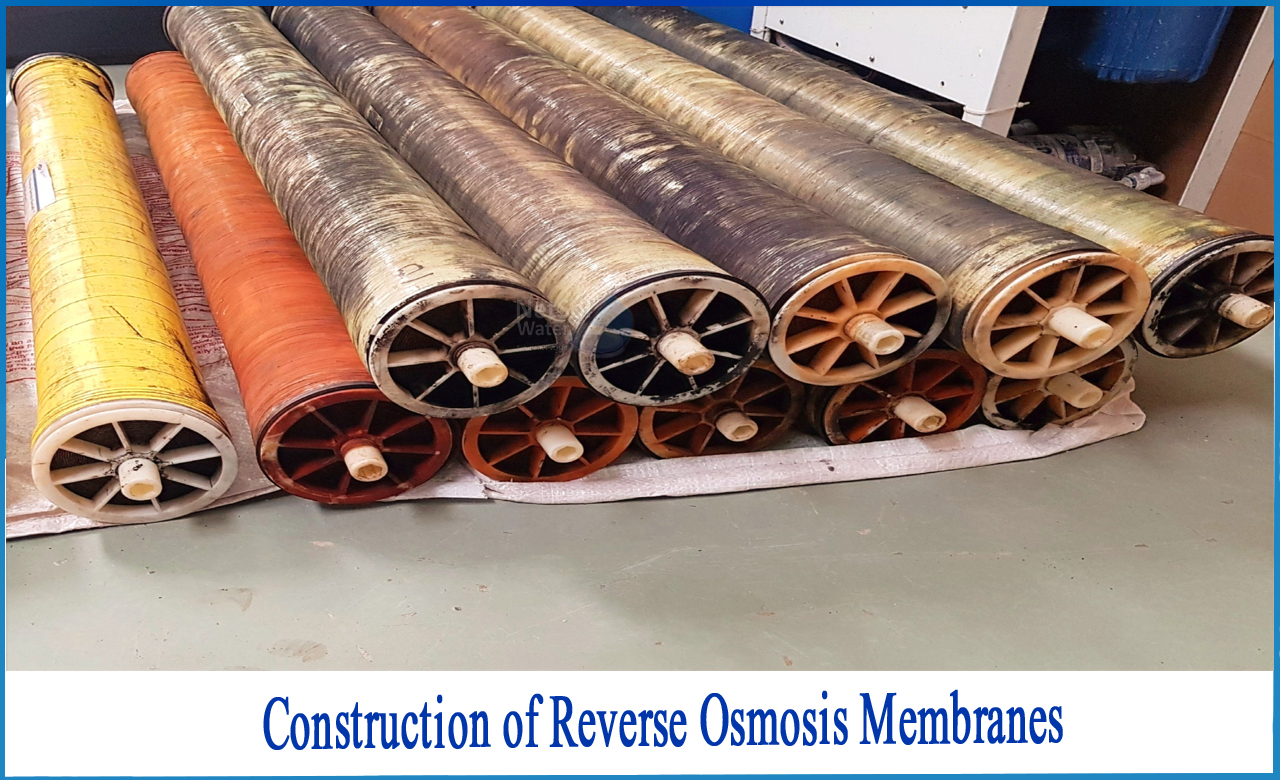What are Reverse Osmosis Membranes?
RO membranes are virtually non-porous, allowing particles and even many low-molar-mass species like salt ions and organics to pass through.
Types of reverse osmosis membranes
1: Membranes made of cellulose:CA membranes was the market leader in the RO membrane market at first. With a feed solution of 52,500 mg/L NaCl and flux values ranging from 5 to 11 gallons per square foot per day (GFD) (9 to 19 LMH) and feed pressures ranging from 1500 to 2000 psig, theCA membranes showed NaCl rejection values of approximately 99.5 percent. Acetylated cellulose is used to make CA membranes. These membranes are mechanically resilient because they are made of a linear, rod-like substance that is relatively inflexible.
The degree of acetylation in commercial CA membranes used for reverse osmosis is around 2.7. The salt rejection and permeate flux are well balanced in this mixture.CA and CTA mixes are also used in some membranes. Combining CA with CTA improves mechanical stability and hydrolysis resistance while lowering permeability. From a 2000 mg/L NaCl feed solution, one commercial CA mix membrane has a flow of 22 GFD at 425 pressure (p) and an average NaCl rejection of 97.5 percent.
2: Membranes made of thin film composites:Until the introduction of thin film composite (TFC) RO membranes in 1972, cellulose acetate membranes were the most popular choice for RO membranes. TFC membrane fluxes and rejections outperformed CA when based on aromatic polyamides. For example, a CA-based membrane with a 2000 mg/L NaCl feed solution at 77°F and pH 7.5 has a flow of 22 GFD at 425 psig feed pressure and an average NaCl rejection of 97.5 percent.
A polyamide TFC membrane with the same feed solution has a flow of 27 GFD and an average rejection of 99.5 percent at just 225 psig feed pressure. The majority of TFC membranes are constructed with a porous, highly permeable support like polysulfone that is coated with a cross-linked aromatic polyamide thin film.
These membranes provide several advantages over CA membranes, in addition to high rejection and flux. They can, for example, reject some organics with low molecular weight. They're also more stable at higher temperatures and over a wider pH range.
But these membranes, on the other hand, have a sensitivity to chlorine. Ring chlorination is thought to occur in the polyamide, which disrupts hydrogen bonding between chains and destroys the polymer matrix. This process causes a significant reduction in salt rejection rates.
How to Construction of Reverse Osmosis Membranes?
A thin film composite (TFC) membrane, consists of almost three layers
1: A polyester support web
2: A microporous polysulfone interlayer, and
3: An ultra-thin polyamide barrier layer on the top surface.
Typically, RO membranes are made of cellulose acetate or polysulfone that has been coated with aromatic polyamides. These are made by casting a film from a polymer and solvent solution and then immersing it in a non-solvent for the polymer. Because most polymers employed in these applications are hydrophobic, the most common nonsolvent is water. The polymer precipitates to create the membrane when it comes into contact with water.
A perforated permeate pipe is looped around the membranes. On three sides, two membrane sheets are bonded together, with only one aperture facing the permeate pipe. The feed water passes from one side of the membrane to the other. A portion of the water penetrates the membrane due to the high pressure in the vessel, and this permeate water can only exit the PV through the permeate pipe, while the rest of the water - now more concentrated - exits on the other side of the membrane, simply flowing over the sheet.
How can we help?
Netsol Water will design and choose the membrane that best suits the needs of your business and the project. We integrate RO technology with the appropriate pre-treatment and post-treatment to deliver long-term and full solutions.
Our water and wastewater treatment systems provide the following benefits_
1: Engineered and custom-designed solutions for one-of-a-kind requirements.
2: Design, engineering, manufacture, automation, installation, maintenance, and training are all included in turnkey systems.
3: Water and wastewater treatment, recycling, reuse, and disposal using cutting-edge technologies.
4: On-line assistance and on-site service and support are at our best.
For further assistance or product-purchase-related queries, call us at +91-9650608473 or email at enquiry@netsolwater.com.



